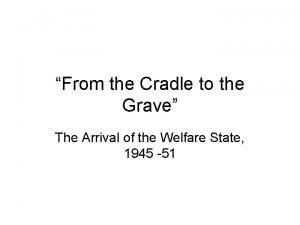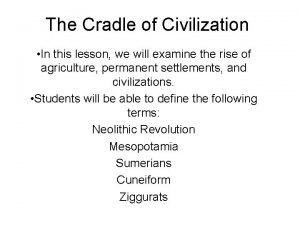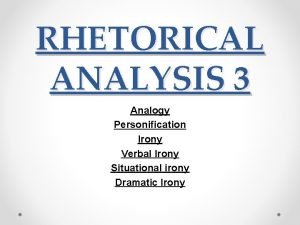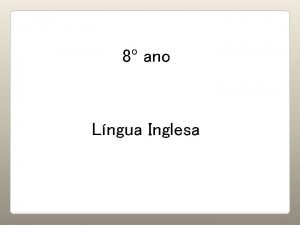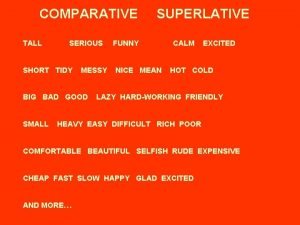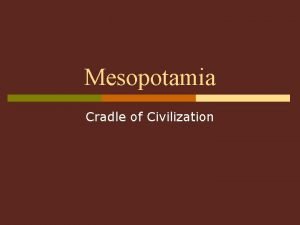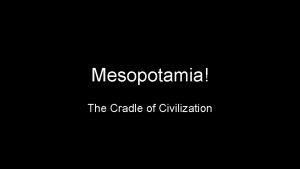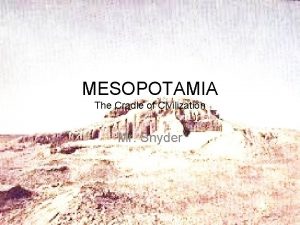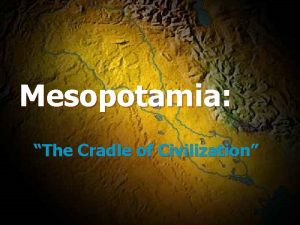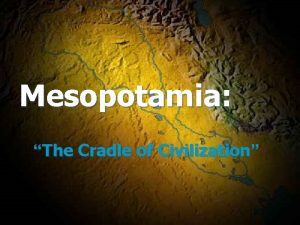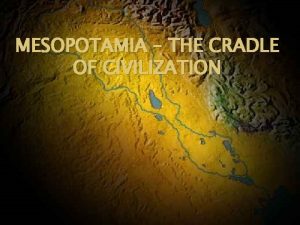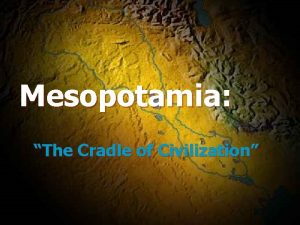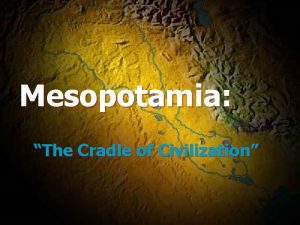Mesopotamia The Cradle of Civilization Mesopotamia aka Messy











- Slides: 11

Mesopotamia The Cradle of Civilization

Mesopotamia “aka Messy Potatoes” is located between the Tigris and the Euphrates Rivers. It means “Land Between the rivers. ” Modern day location – Iraq, Iran, Syria, and parts of Turkey.

Ancient Mesopotamia = Modern Day Iraq and Iran

Neolithic settlers used the red route to migrate to new land.

The Mesopotamians were polytheistic. They believed in many gods and goddesses.

Mud brick, mud plaster and wooden doors were typical of Ancient Mesopotamian homes during the particular time period described. Most houses had a square center room with other rooms attached to it. The poorest people built houses out of perishable materials such as reeds on the outside of the city.

Ziggurats

All the sacrifice to go to school was worth it to the Sumerians. Once a student successfully completed twelve years of schooling, he was an official scribe, or writer. Scribes were very valuable in order to the maintain and improve the record keeping of the laws, trading, and religion. The Sumerians also used cylinder seals carved out of stone, and they were used as identification. For example, in order to identify himself, a Sumerian would roll his cylinder seal across a wet clay tablet. This would make an imprint on the tablet that would become permanent by sun-baking or kiln-firing. Cylinder seals were used as signatures are used today.

Smarter is Better • The Babylonian astronomers were very interested in studying the stars and sky, and most could already predict eclipses and solstices. Mesopotamian astronomers worked out a 12 month calendar based on the cycles of the moon. They divided the year into two seasons: summer and winter.

They were good at MATH! • The Mesopotamians used a (base 60) number system. This is the source of the current 60 -minute hours and 24 -hour days, as well as the 360 degree circle. The Sumerian calendar also measured weeks of seven days each. • The Babylonians are also known for the Babylonian mile, which was a measure of distance equal to about seven miles (11 km) today. This measurement for distances eventually was converted to a time-mile used for measuring the travel of the Sun, therefore, representing time. • They almost found Pi! 3. 14, not coconut crème.

And…. . Technology • Mesopotamian people invented wheel, metal and copper tools glass and lamp making, textile weaving, flood control, water storage, as well irrigation canals. • They were also one of the first Bronze age people in the world. Early on they used copper, bronze and gold, and later they used iron. Palaces were decorated with hundreds of kilograms of these very expensive metals. Also, copper, bronze, and iron were used for armor as well as for different weapons such as swords, daggers, spears, and maces. • The earliest type of water pump was first used by Sennacherib, King of Assyria, for the water systems at the Hanging Gardens of Babylon and Nineveh in the 7 th century BC, and later described in more detail by Archimedes in the 3 rd century BC. [22] Later, the Baghdad Battery, which may have been the first batteries, were created in Mesopotamia.
 Mesopotamia the cradle of civilization worksheet answers
Mesopotamia the cradle of civilization worksheet answers Cradle to grave cradle to gate
Cradle to grave cradle to gate Cradle to cradle boek
Cradle to cradle boek Cradle to grave housing report
Cradle to grave housing report Sustainability & resource productivity consulting
Sustainability & resource productivity consulting The cradle of civilization
The cradle of civilization Conclusion of the mesopotamian civilization
Conclusion of the mesopotamian civilization Situational map
Situational map Personification in oedipus rex
Personification in oedipus rex Comparativo de messy
Comparativo de messy Comparative and superlative for exciting
Comparative and superlative for exciting What is the theme of the story money mark and penny petal
What is the theme of the story money mark and penny petal



